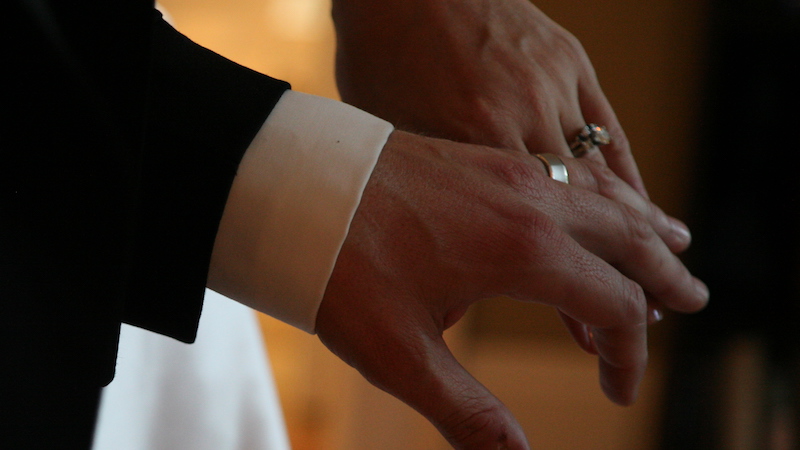Why is the 3rd finger our wedding ring finger?
- 6 October 2017
- Posted by: Michael H Hallett
- Category: Patriarchy ,

You know the deal. The bride and groom stand before the altar. The celebrant asks for the ring or, these days, rings. The best man fumbles them—accidentally or on purpose—before handing them over. Everyone laughs to let off tension before the climactic moment. The groom slips a shiny ring onto the third finger of the bride’s left hand. She, in return, puts a ring on his third finger. “You may now kiss the bride,” intones the celebrant. Key joyful celebrations and a lot of innuendo-laden jokes about wedding nights and wrecked beds.
But have you ever stopped to wonder why it’s the third finger of the left hand that a wedding ring goes on? I hadn’t—until I stumbled onto a 2015 study of monogamy at Oxford University. The study, led by experimental psychologist Rafael Wlodarski, started by studying attitudes to monogamy. They found that attitudes were sharply polarised, with just over 50% of men and just under 50% of women preferring multiple short-term sexual relationships to long-term, single-partner fidelity.
The finger
Wlodarski’s team then studied the finger lengths of 1,313 British men and women. Apparently, the ratio between the lengths of our second and fourth fingers indicates the amount of testosterone we were exposed to in the womb. This led Wlodarski’s team to posit that people with a relatively long third finger—the ring finger—would be more interested in multiple partners. The data confirmed this supposition.
It also raises another question. Is there a connection between the length of the third finger, i.e. the indicator of our sex drive, and the tradition of placing a ring on the third finger to signify marriage—and, by extension, the restriction of sexual appetite to only our legally wedded partner?
Is there a connection between the length of the third finger, i.e. the indicator of our sex drive, and the tradition of placing a ring on the third finger to signify marriage—and, by extension, the restriction of sexual appetite to only our legally wedded partner?
A sinister dexterity
Another question is about the use of the left hand, as opposed to the right. The left is traditionally associated with the feminine, with the moon, and with the dark. All of these elements are not only associated with sexuality, but with uncleanliness and even evil. In French, ‘left’ is sinister—the same derivation as ‘sinister’. In patriarchal societies, sex is inherently considered unclean, evil, and shameful.
On this site I have written extensively about the numerous ways that sexual shame manifests in society. Most of these ways are so common we don’t even notice them. Is this another of them? Does the placing of a wedding ring on the third finger symbolically represent the castration of sexual desire to conform with patriarchal notions of sexual repression and monogamy? Perhaps, if Rafael Wlodarski and his team have any time, they could check it out?
Image: Ring Fingers by Scott on Flickr.
